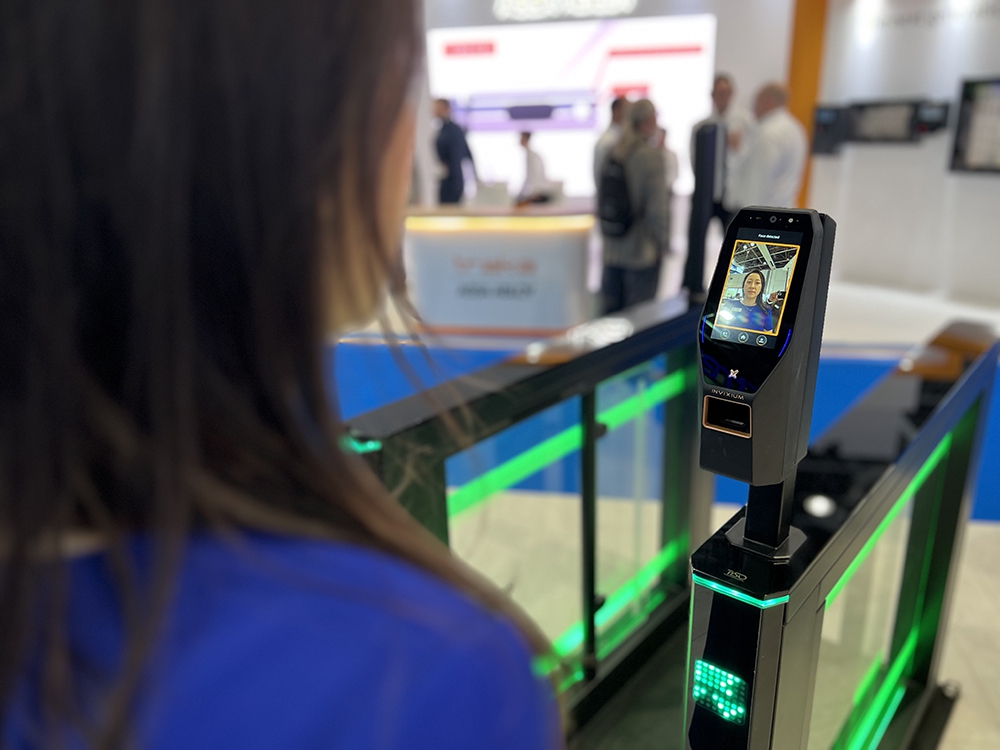Biometrics and access control: A chat with Shiraz Kapadia, CEO/president, Invixium

By Cory Harris, Editor
Updated 10:22 AM CDT, Wed June 14, 2023

YARMOUTH, Maine—Face recognition technology really came to the forefront during the pandemic, when touchless and contactless technology were utilized more as access control solutions, as opposed to fingerprint ID systems and other touch-based technologies.
Security Systems News recently spoke with Shiraz Kapadia, CEO and president of Invixium, a Toronto-based provider of facial recognition biometrics solutions. In this exclusive interview, Kapadia addresses the changing landscape in this specific product category and how it impacts access control.
 SSN: How are biometrics impacting access control, and what new developments are on the horizon?
SSN: How are biometrics impacting access control, and what new developments are on the horizon?
KAPADIA: The latest biometric technology developments impacting access control are focused on face recognition. When the pandemic struck, fingerprint and other touch-based biometric solutions fell by the wayside and there was an immediate shift to touchless and contactless technology. Face recognition became very popular, and in my opinion, it gained almost a decade’s worth of adoption during the pandemic period.
As for new developments in face recognition technology, we continue to focus on contactless technology, and launched a new modern access control reader capable of reading RFID cards along with mobile credentials via BLE or NFC. While biometrics is the heart and soul of Invixium, we are humble enough to admit that not every door requires the extreme level of security that facial recognition biometrics offers. Our new solution, VERTU, strikes the perfect balance of sleek design and security, rounding out a full range of advanced readers for a comprehensive range of access control applications.
SSN: What is driving the increased demand for biometrics across the industry?
KAPADIA: We are seeing steady demand from end-users for biometrics, mostly to replace their legacy, access card, or PIN-based access control systems. But the increase in demand for biometrics that we have experienced is for workforce management applications, where companies are choosing to modernize their existing infrastructure driven by digital transformation initiatives that seek to improve profits, security, and efficiency by converting antiquated solutions to modern, digital platforms. I think this current trend of transition will continue because it is getting impossible to ignore the multitude of benefits that biometrics bring in terms of security and convenience.
SSN: What are the most common types of biometrics being used for access control today?
KAPADIA: Fingerprint, iris and face recognition are the most commonly used biometrics adopted in the market today. Fingerprint obviously took a big hit due to the pandemic and concerns surrounding the spread of germs on shared surfaces, but as a result, touchless biometric modalities like face recognition gained over a decade of adoption almost overnight.
Face recognition is fast, accurate, and easy to interact with but undoubtedly, more expensive than fingerprint. However, as the technology matures, manufacturers will continue to refine their product development strategies to make face recognition products more affordable.
SSN: What are the pros and cons of biometric-driven access control?
KAPADIA: Biometric-driven access control systems offer a wide range of benefits for organizations large or small. Traditional access control methods like keys, cards, and PIN codes leave an organization’s physical security vulnerable if these credentials are lost or stolen. Studies show that 25 to 50 percent of cybersecurity breaches occur due to internal threats, either intentionally or through human error (weak passwords). Investing in a highly secure, highly accurate alternative like face recognition mitigates these risks while providing employees and visitors with a fast, easy, and touchless way to access your building.
Face recognition does come at a premium cost compared to implementing traditional credentials for access control. However, if you analyze the Total Cost of Ownership (TCO) between a biometric system versus a card reader system over a decade and include the yearly investment in replacement cards, the former will become more economical. Further, implementing biometrics instead of card access will help reduce plastic waste for the environment.
SSN: What vertical markets tend to benefit most from biometric access solutions?
KAPADIA: We have noticed an increased interest from clients in the industrial sector where many traditional access control and workforce management devices are not effective or efficient. These include oil and gas, petrochemical, construction, transportation, seaports, mining, and manufacturing. These applications demand purposefully designed biometrics solutions that are robust enough to withstand intense wear and tear and weather, making it the ultimate solution for some of the most prominent industries around the globe.
SSN: How can systems integrators increase the sales of biometric solutions?
KAPADIA: It is critical to understand biometrics and become intimate with the different nuances between different solutions. At Invixium, we install biometrics at all of our offices, allowing us to interact with our products day in and day out. We also perform beta testing of new models at our own buildings before releasing. This kind of first-hand experience and knowledge can set you apart when a customer asks questions about the biometrics you sell. In addition, customers appreciate when integrators take the time to understand their problems or challenges and propose solutions that actually solve their challenges.
Invixium has worked with many customers along with integrators on customized biometric solutions that specifically fit their needs, whether it be a tailored workflow solution or another specialized feature.
SSN: There has been a bit of pushback on facial recognition by privacy advocates that seems to contradict the increase in demand for this technology by security professionals. What are your thoughts on this?
KAPADIA: I have been in the biometrics industry for 20-plus years now and held senior-level positions at Bioscrypt, one of the early pioneers. In the early stages, analysts had predicted that the biometrics industry was going to explode with “hockey-stick” growth, but in reality, this was not the outcome. Understandably, people value their privacy, and that is why Invixium continues to focus on providing education on the benefits of biometrics while addressing the privacy concerns of our customers and installers. That is why we ensure that data captured by our products is protected by the latest encryption protocols where data is stored, and all data that is transmitted from the device to the server is sent via a secure communication channel.
However, I do believe we are reaching a new era of acceptance. Ever since the introduction of fingerprint authentication and Face ID on the iPhone, people are realizing that biometrics, particularly facial recognition, can be incredibly convenient and secure without invading their privacy. This realization is having positive ripple effects throughout the larger biometrics industry, especially for access control applications.
Additionally, because face recognition is touchless and reduces the spread of viruses and germs, we have noticed a major spike in demand for these types of touchless solutions, which is a trend we expect to continue into the post pandemic era.
Comments